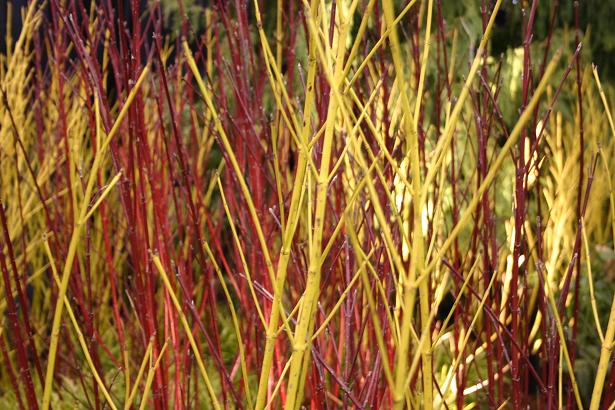Georgia Gardener Newsletter Design Tip: February 8, 2007
These Red and Yellowtwig Dogwoods are hard to miss in the winter
Evergreens for Winter Interest
Evergreens by far make up the bulk and are the easiest plants to install for winter interest because they have foliage year round. However,
plain ol' green gets pretty boring by February unless the plant has some interesting characteristics. But evergreen doesn't have to mean green,
as evergreen plants now come with yellow, purple and variegated foliage that often becomes brighter in colder weather.
Silver Mound Artemisia (Artemisia schmidtiana 'Silver Mound') loves full sun and very well-drained soil.
It's a great plant for an herb or rock garden where it forms a low sprawling perennial or ground cover.
Color Guard Yucca (Yucca filamentosa 'Color Guard') is also a sun-lover for well-drained soil. In cold weather the golden
portions of the foliage turn a light pink. Seersuck sedge (Carex plantaginea) is a native woodland perennial which gets its name
from puckered appearance of its foliage. Grow this plant in moist shade and it will make an outstanding plant for winter interest. Note:
Seersucker Sedge is usually only available from specialty nurseries or mail order.
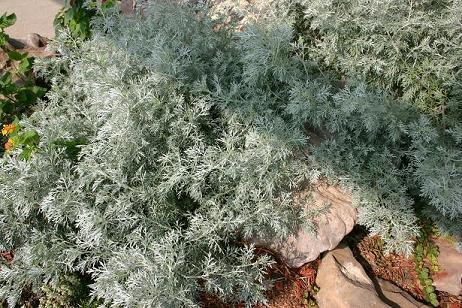
|
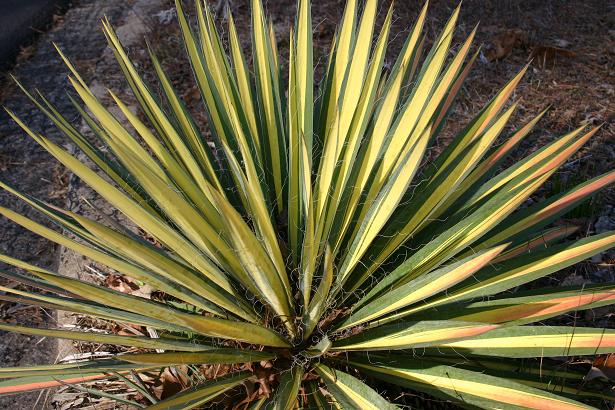
|
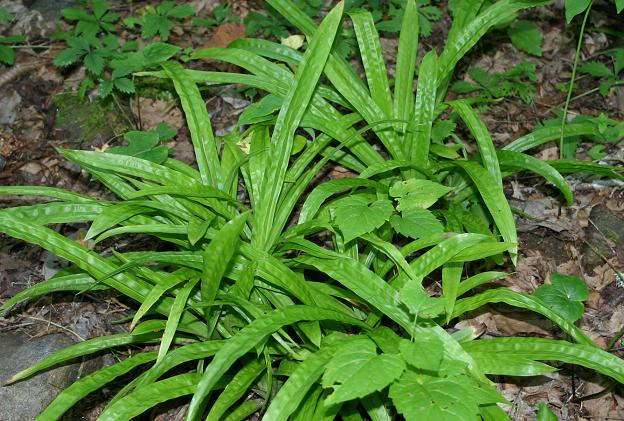
|
| Silver Mound Artemisia | Color Guard Yucca | Seersucker Sedge |
Brightly Colored Evergreens or Deciduous Plants
There are plants that even though they lose their leaves in the winter (deciduous), they have brightly colored branches or bark that can be
interesting. Positioned correctly to highlight their colors and textures and you can have a real winter focal point.
The Coral Bark Japanese Maple (Acer palmatum 'Sango-kaku') has some of the best bark color of any plant. One of the few Japanese
maples that can take full sun, its bright red bark is very dramatic in the winter. Not to be outdone, our northern native Redtwig Dogwood
(Cornus sericea) also has shocking red stems. However, it and its yellow cousin (Cornus sericea 'Lutea') are sun-loving shrubs
(not part-shade trees) and tend to sucker in moist soils. They look stunning against a backdrop of snow.
One plant not pictured is the River Birch (Betula nigra) with its papery peeling bark.
A variety of cultivars exist including some with peachy-pink bark that becomes exposed when the paper coating peels away.
One of the brightest-foliaged full sun evergreens is the Gold Mops (aka Mops) Cypress (Chamaecyparis pisifera 'Golden Mop' or
'Mops'). The bright yellow drooping foliage maintains a good golden color in hot weather but brightens to its best in cold weather. This
plant has become a "hot item" in the landscaping world.
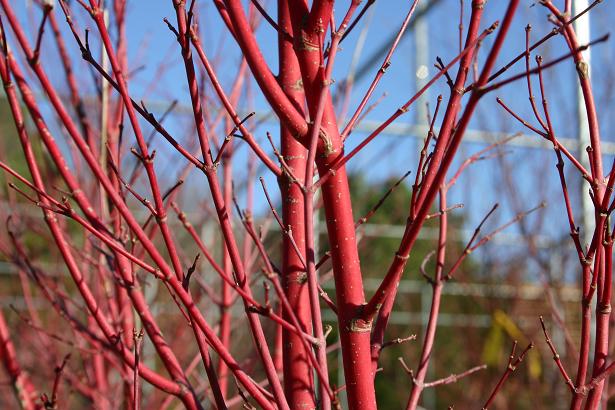
|
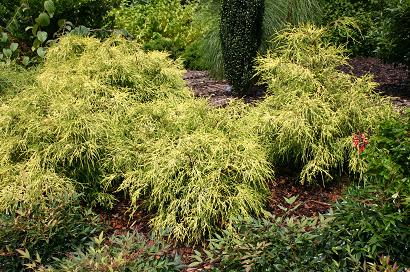
|
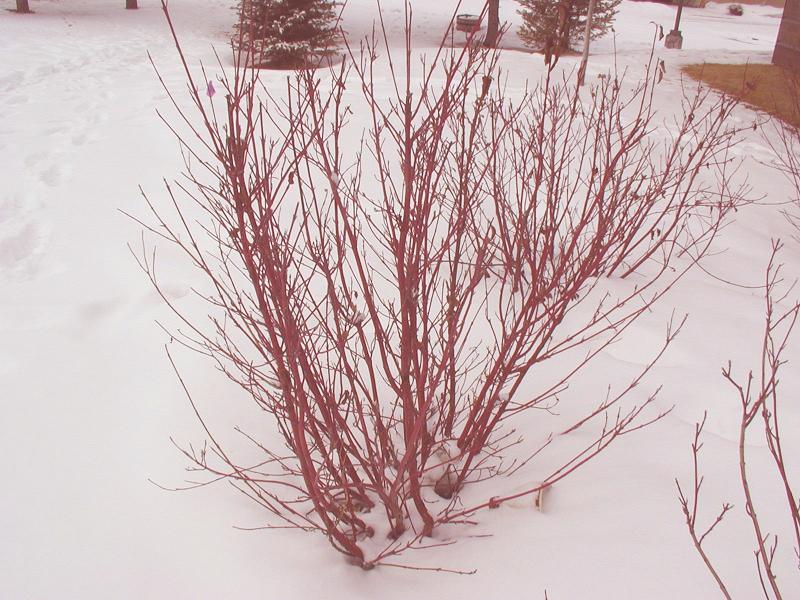
|
| Coral Bark Japanese Maple | Gold Mops Cypress | Redtwig Dogwood |
Unusual Form or Structure
Leaves or not, some plants just look weird if not downright wicked in the winter. In this category I place plants with unusual weeping or
twisted habits and one with both a gnarled appearance topped off with deadly thorns.
The Trifoliate Orange (Poncirus trifoliata) has some of the nastiest thorns of any plant I've ever seen. Coupled with its twisted
habit and it makes for an interesting conversation piece. Alas, I do not use or recommend this plant as it has been placed on the
non-native invasive lists for
Georgia and several surrounding states.
What I would like to see more of is a cultivar of our native winged elm. The Lace Parasol Winged Elm (Ulmus alata 'Lace Parasol') is
a darling dwarf tree with a weeping habit and boldly corked (winged) branches and trunk. It grows best in full sun and can be container
grown for many years if properly maintained. Ornamental grasses often have good winter interest, but some tend to look ratty by late winter.
Not so for the dainty Mexican Feather Grass (Stipa tenuissima) which reaches a maximum height of 18 inches. It's soft texture, golden
color and swaying movement in a gentle breeze make it one of the best year round ornamental grasses for the garden. Not pictured, but definitely
part of this group would be the Harry Lauder's Walking Stick (Corylus avellana 'Contorta') with its twisted habit not only on the
trunk and branches, but also on the leaves. In the winter, the bare twisted stems are covered with catkins (flowers) that hang down like little
Chinese lanterns.
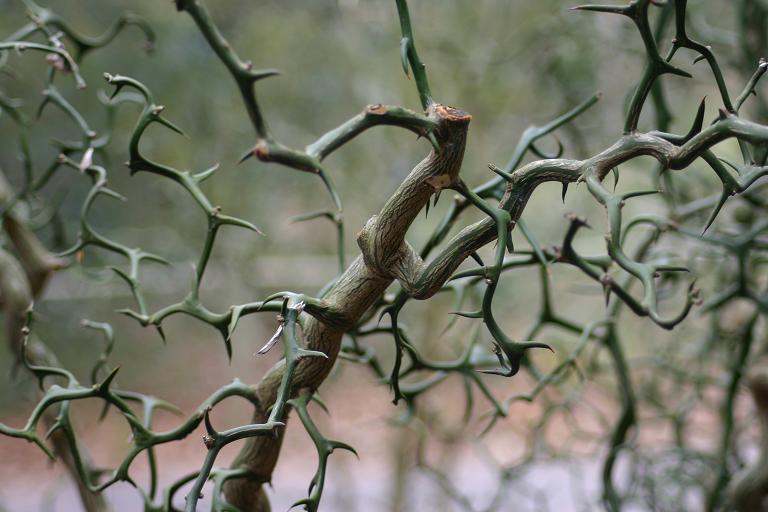
|
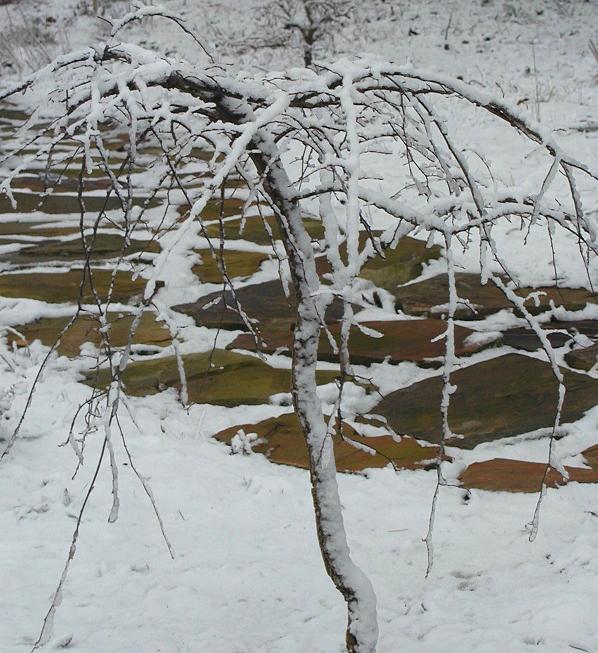
|
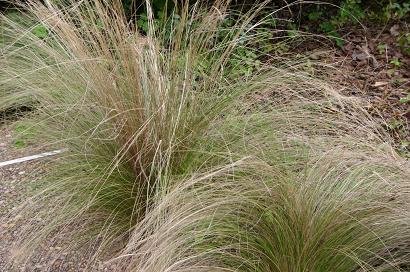
|
| Trifoliate Orange | Weeping Winged Elm | Mexican Feather Grass |
Copyright © 2007 by Theresa Schrum - All rights reserved
No part of this website may be reproduced without the expressed written permission of Theresa Schrum
